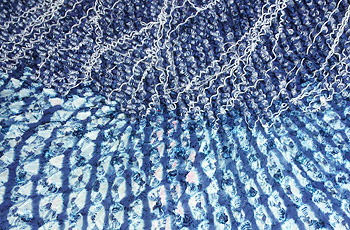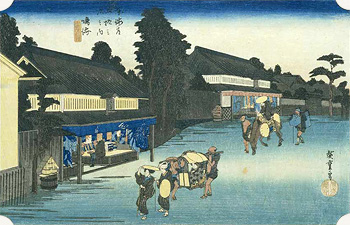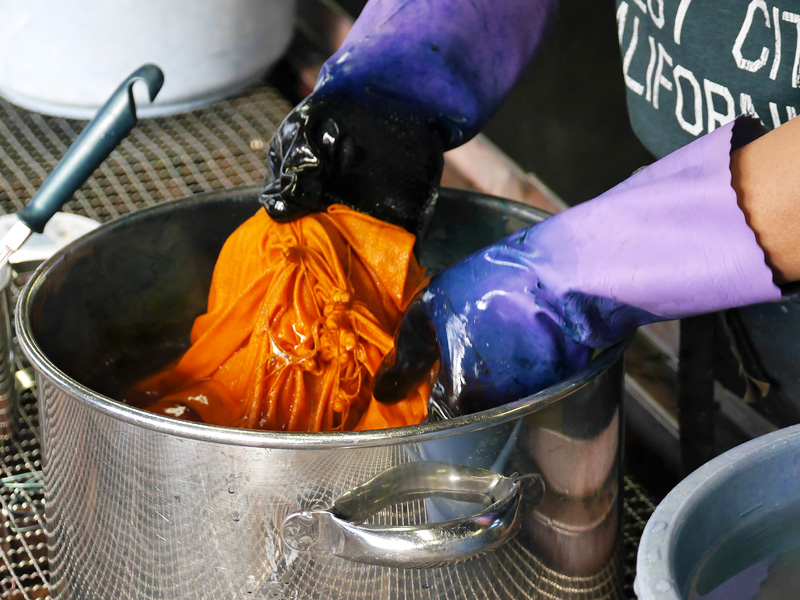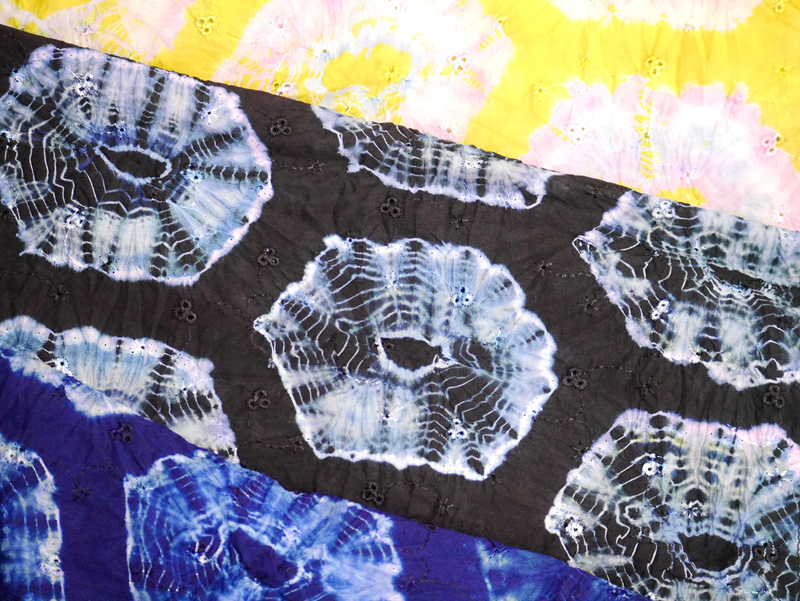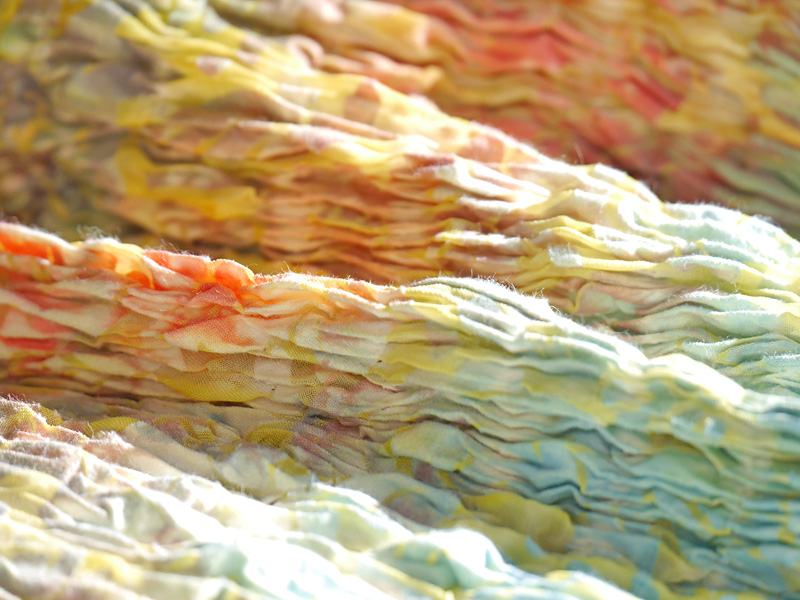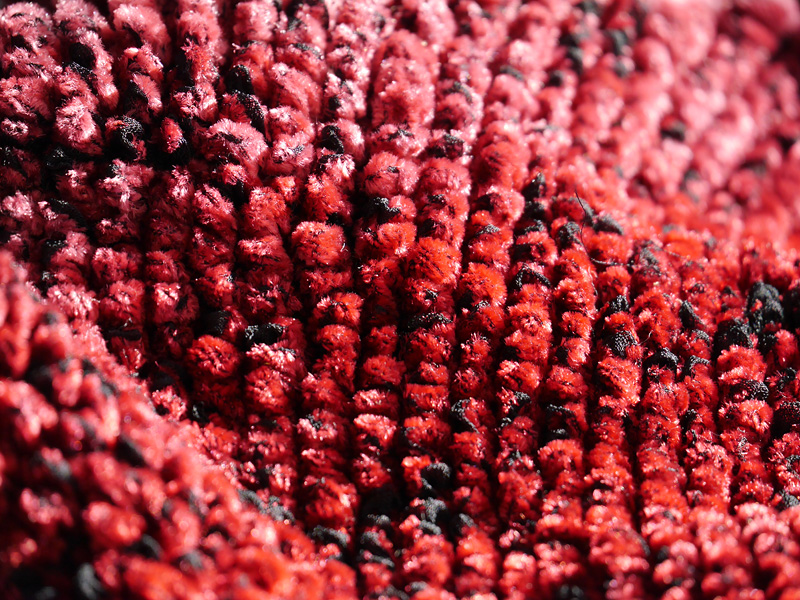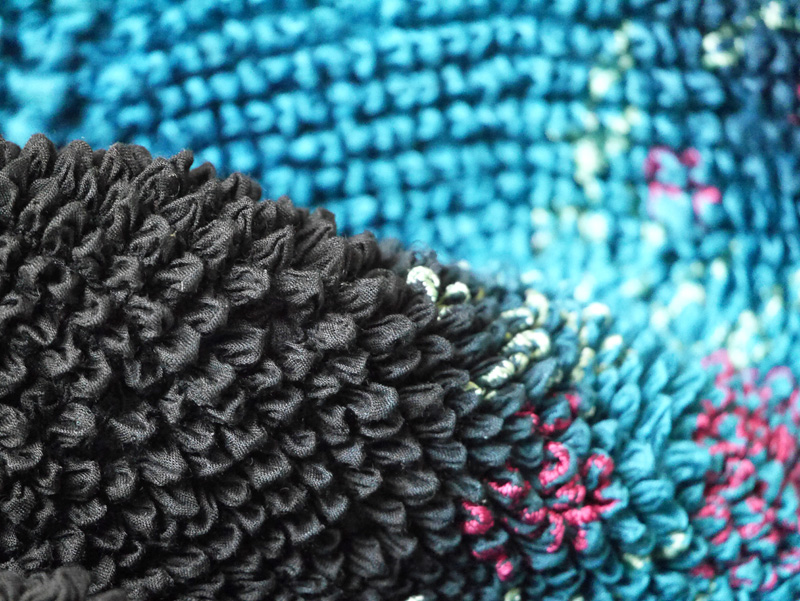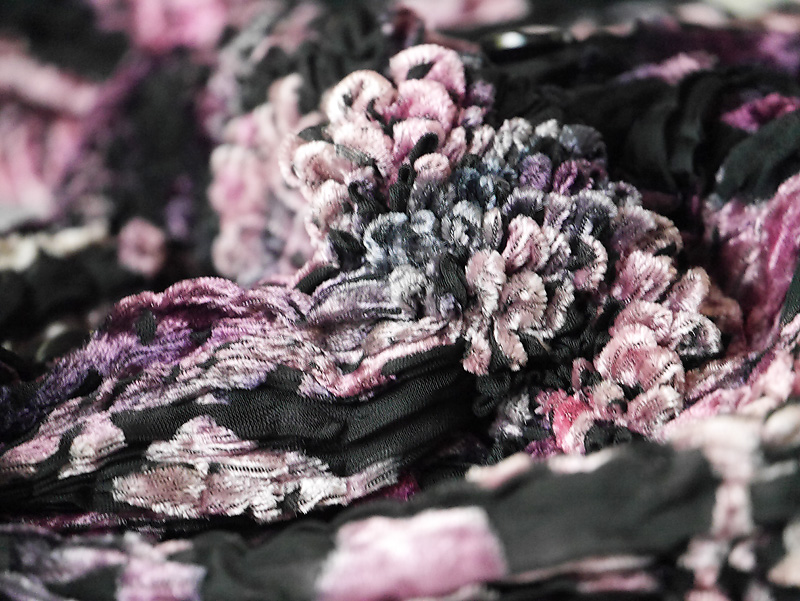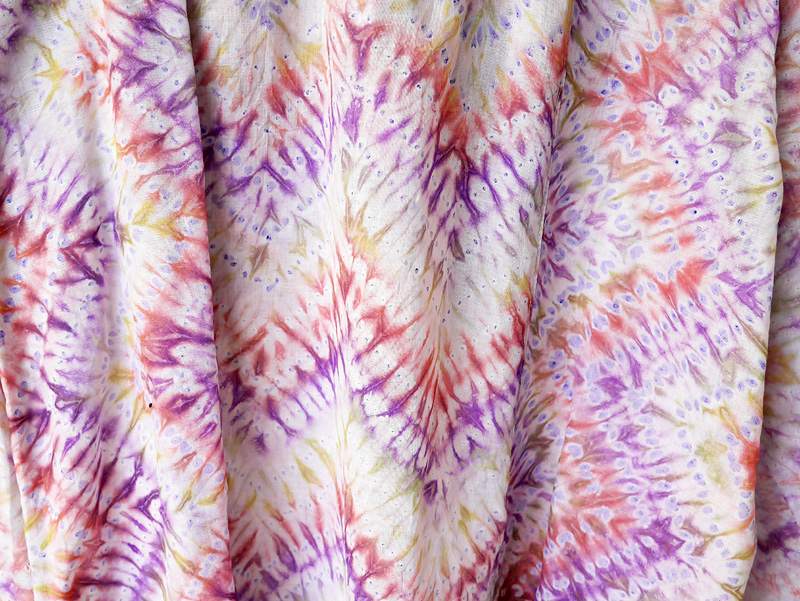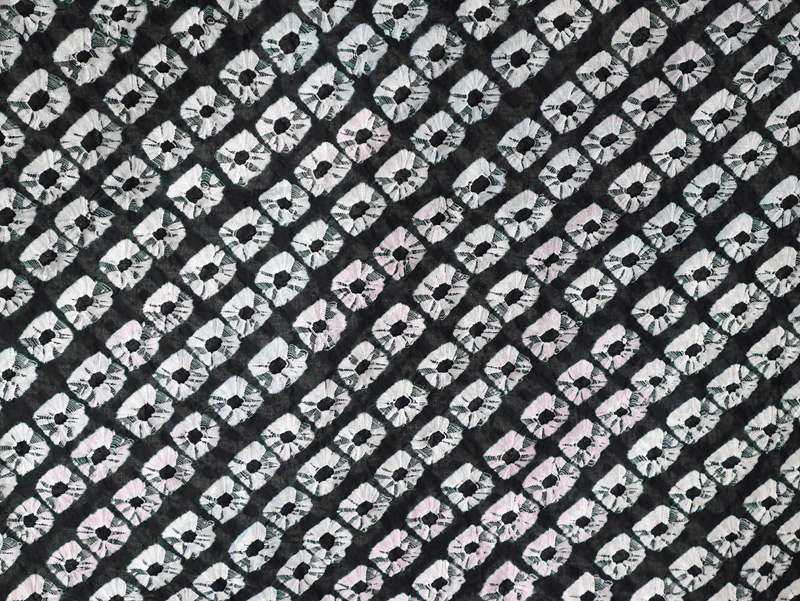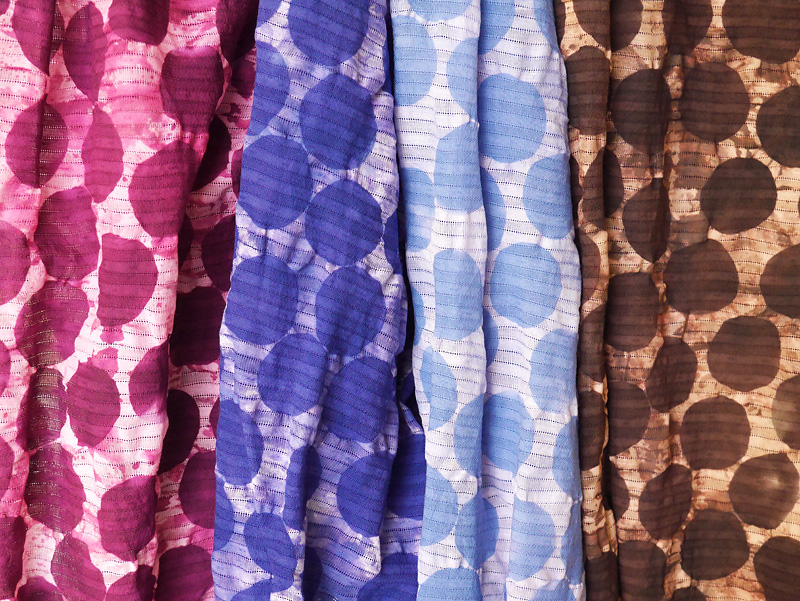絞りとはWhat is Shibori(Tie-dyeing)
布を糸やひもなどでしっかり縫ったりしばったり、又は板などで布をはさんだりすることによって、その部分だけ染料が入らないように染める方法です。縫い方やしばり方、板のはさみ方、布のたたみ方によって、様々な柄が生まれます。
絞り染めは、古くから世界各地で行われていました。日本へは、シルクロードを渡って飛鳥―奈良時代に伝わったとされています。仏教がインドから中国を経て日本へ伝来するのと同時期に、大陸文化として入ってきたようです。絞り染めの布は、正倉院にも宝物として数多く残されています。
In this method, the cloth is sewn or tied tightly with thread or string, or the cloth is sandwiched between boards to prevent the dye from entering that part. Various patterns are created depending on how to sew, how to tie, how to pinch the board, and how to fold the cloth.
Tie-dyeing has been practiced all over the world since ancient times. It is said that it was introduced to Japan in the Asuka-Nara period across the Silk Road. It seems that Buddhism entered the continent as a continental culture at the same time that Buddhism was introduced to Japan from India via China. Many tie-dyed cloths are preserved as treasures in Shosoin.
鳴海絞りNarumi Shibori
鳴海絞りは、名古屋市緑区鳴海町を中心に400年以上前からはじまりました。比較的近い場所に木綿の産地があったので、木綿を入手しやすく、絞り染めの浴衣や手ぬぐいなどがよく作られました。
江戸時代には江戸(東京)と京都を結ぶ街道が設けられました。東海道五十三次です。鳴海は40番目の宿場町として栄えました。上は将軍様、大名から商人、町民まで、あらゆる人たちが行き来しました。色鮮やかな絞り染めは、行き交う人々の目にも興味深く映り、手土産として重宝されたそうです。その繁栄ぶりは安藤広重や葛飾北斎の浮世絵などにも描かれています。
日本の他の地域でも絞り染めは行われていましたが、鳴海では絞りについての研究が特に盛んでした。そのため産み出された絞りの種類は100種類以上と、日本のみならず世界的にみても突出した絞りの産地となりました。
1975年には、有松鳴海絞りとして国の伝統工芸品にも指定されています。
Narumi Shibori began over 400 years ago, mainly in Narumi-cho, Midori-ku, Nagoya. Since there was a cotton producing area relatively nearby, it was easy to obtain cotton, and tie-dyed yukata and tenugui were often made.
During the Edo period, a road connecting Edo (Tokyo) and Kyoto was built. The fifty-three stages of the Tokaido. Narumi prospered as the 40th post town. All sorts of people came and went, from shoguns to daimyos(feudal lord) to merchants and townspeople. It is said that the colorful tie-dyeing was attractive to the eyes of passers-by, and that it was useful as a souvenir. Its prosperity is depicted in ukiyo-e prints by Hiroshige Ando and Hokusai Katsushika.
Tie-dyeing was also practiced in other regions of Japan, but research and development on tie-dyeing was particularly active in Narumi. As a result, more than 100 types of shibori were produced, making it a prominent shibori production area not only in Japan but also in the world.
In 1975, Arimatsu Narumi Shibori was designated as a national traditional craft.
絞り染めの工程Tie-dyeing process
1.デザイン、型彫り、絵刷り Design
鳴海絞りで表現できるデザインを考えます。
図案をもとに、小刀やハト目抜きなどで穴をあけて型紙をつくります。
刷毛で青花液を刷り込んで図案を写します。
Design a pattern that can be expressed with Shibori.
Based on the pattern, a template is made by punching holes with a small knife or eyelet punch.
A brush is used to print the pattern on the cloth.
2.括り Tying
糸と針を使って縫ったり、専用の絞り台を使って括ります。
他にも、板などではさむ絞り技法もあります。
画像は巻上げ絞りを括る様子です。
It is sewn with a thread and needle, and tied with a special tying base.
In addition, there is also a shibori technique of sandwiching between boards.
3.染色 Dyeing
染色をします。
素材によって染料を変えて、絞りの括りが解けないように注意して染めます。
一部の絞りを解いてさらに染めることもあります。
The dye is changed according to the material, and dyeing is done with care so that the shibori tying does not come loose.
Some of the shibori may be untied and dyed further.
4.糸抜き、仕上げ Thread removal, finishing
絞りの種類によって解き方が異なります。
同じ図案でも、一枚一枚表情が違う絞り染め。
それが魅力のひとつでもあり、難しさでもあります。
The method of solving differs depending on the type of shibori.
Even with the same design, each tie-dye has a different expression.
That is part of its charm, but also part of its difficulty.



